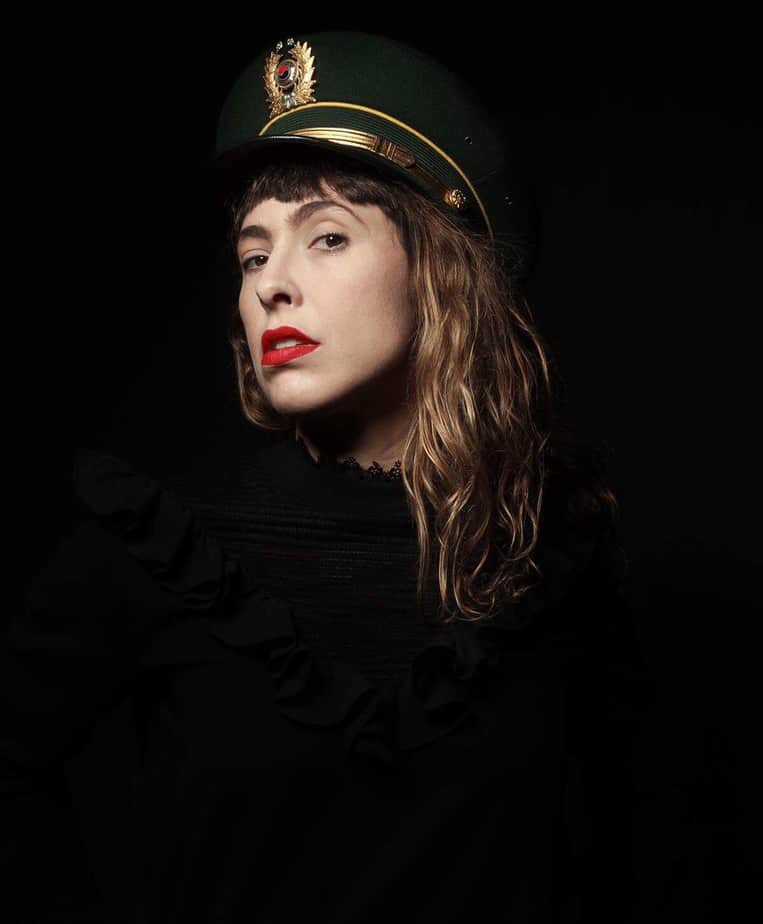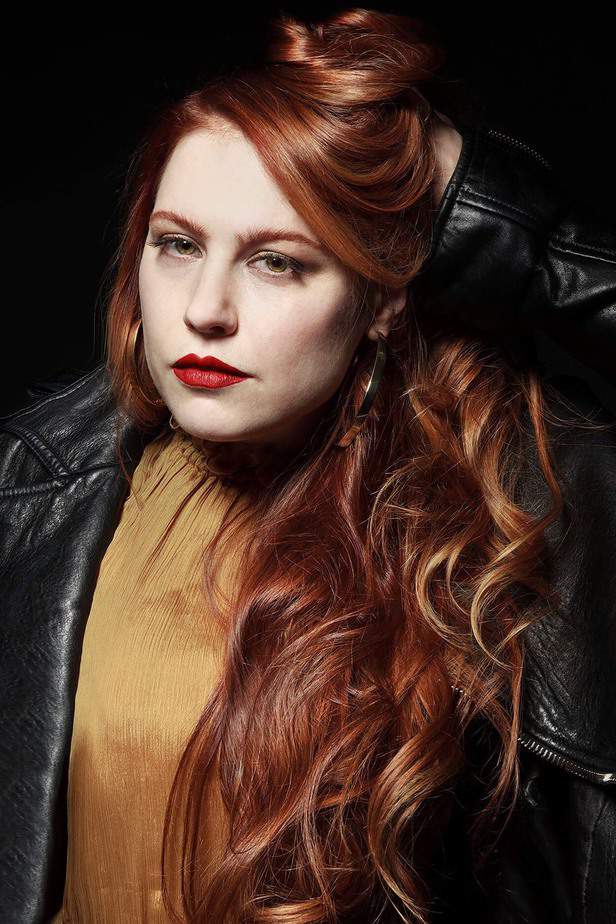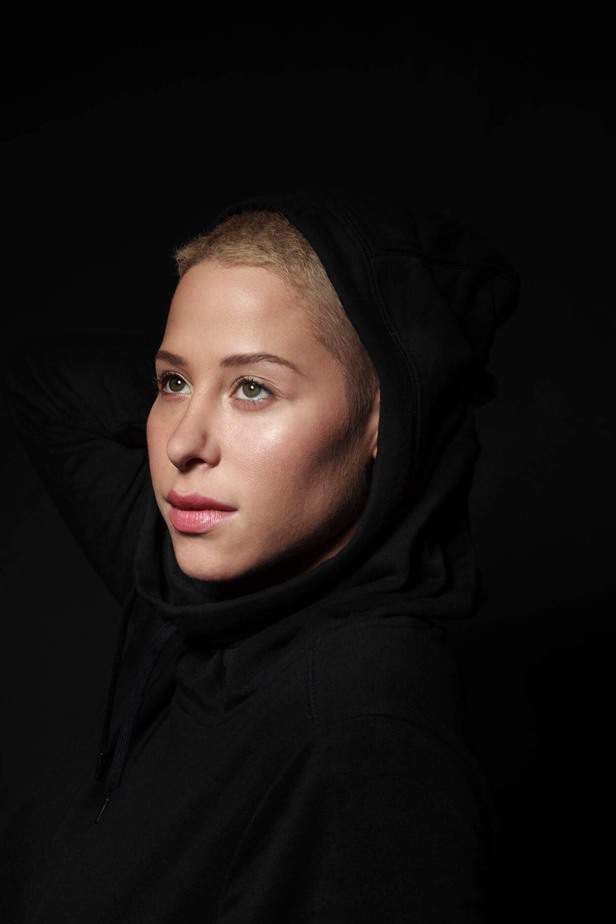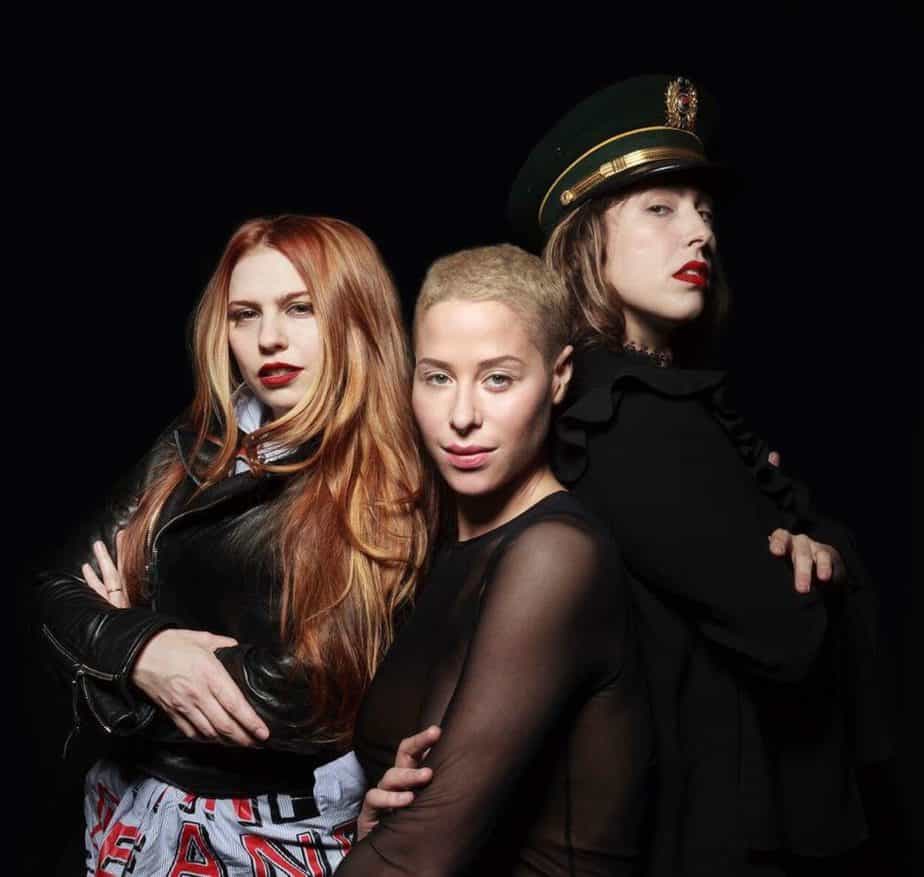In the lead up to Art Basel Miami this year and every year for that matter, freelance art writers accumulate a plethora of urgent press materials advocating for why certain fairs cannot be missed, why their party will be the party, their activation, intervention, booth or installation the most memorable, salacious or avant-garde, and so on and so forth. Some of this smells of the truth and actually invites genuine intrigue, while most of it, well, you know.
Several weeks ago, on October 10th to be precise, Jasmine Wahi and Rebecca Jampol hosted a relatively intimate dinner in their Project for Empty Space gallery located inside Newark, New Jersey’s Gateway Center, a not so torturous jaunt from the heart of Manhattan but one a bit more laborious for 30-something Brooklynites. The dinner was a celebration for the artists featured in PLAY Miami Beach 2017, PULSE Contemporary Art Fair’s video art series, which Wahi and Jampol were charged with curating (this will be their second year assuming this responsibility).
I agreed to travel with Ventiko the photographer-my long-time art world comrade, close neighbor in Bushwick and recently selected PLAY artist-to Gateway, knowing she would make the journey considerably more entertaining. Before guests (writers, artists, curators, editors, PR people, etc.) sat down to dinner, the video selections were screened for the attendees. Ventiko and I caught the tail end of the screenings and were visibly moved on more than one occasion. The theme this year was “Power” and anyone familiar with Project for Empty Space’s mission knows that each of the nine finalists utilized the medium to critique and disrupt established power paradigms and how these socio-political constructs (we can no longer in clear conscience deny) systemically suppress marginalized communities.

Ventiko. | Photo courtesy of Ventiko.
Selections this year include Bolo’s (Saks Afridi & Qinza Najm) Carousel, Adama Delphine Fawundu’s “the cleanse,” Andy Fernandez’s MIRIAM, Bang Geul Han’s How to Remember the Black Book in Seoul, Melvin Harper’s 3017,
Amy Khoshbin’s Protest, Surabhi Saraf’s Intensities, Rodrigo Valenzuela’s El Sisifo, and last and certainly not least, Ventiko’s beautifully haunting short film, 꿈을 깨어 (Waking Dream), which she filmed at an abandoned amusement park in Seoul, South Korea in early 2017.
The cinematic yet stripped-down video thankfully pushed Ventiko out of her Baroque comfort zone; a world often comprised of nudes, lush tapestries, costume jewelry and other plant and animal ephemera, and returned focus to the author (Ventiko), invariably the most interesting thing about her work to begin with. Though the ethereal, abandoned setting was a happy apparitional gift and a cinematographer’s wet dream, Ventiko, standing in as her own singular muse, was able to deliver something both deeply personal and universal.
“With all of my work, I hope a message of empowerment, positivity and acceptance of people and the worlds they were born into comes across in a relatable and digestible manner,” says Ventiko from inside her long-time Bushwick studio as she prepares to shoot her fellow subjects, Fischer Cherry and Kennedy Yanko. “However, I’m not interested in holding anyone’s hand to get to that.”
Kudos to Wahi and Jampol for recognizing this display of artistic vulnerability let alone celebrating it. Hopefully this fierce duo continues to push Ventiko into fresh terrain, while making sure not to dilute the overflowing (at times overwhelming) wealth of energy and unbridled magic that makes her so valuable to the community.

Fischer Cherry. | Photo courtesy of Ventiko.
Moments before sitting down to dinner (back to the narrative), I was approached by Fischer Cherry, a young artist and writer who I met weeks earlier at a nice but nevertheless weird real estate art show thing in SoHo featuring the surprisingly compelling still-life works of the young, bearded, criminally sweet John Gordon Gauld. Ventiko happened to be there as well. Cherry, who, despite illustrating her considerable creative history in NYC, seemed to emerge out of nowhere like a charming, quirky character in one of Tolkien’s literary epics that was shamefully left out of the cinematic adaptation.
At Gateway, the three of us made our way over to the dinner table and looked for our seat assignments, which we soon discovered were in a chaotic state of flux. It was clear that Ventiko and I would have to be separated for anyone else to get a single word in, which we both understand (no hard feelings). After multiple, impressively stealth, albeit confusing Three-card-Monte maneuvers, I found myself at the far, nether corner of the proceedings. I’d like to think if any baby could be put so conspicuously in the corner and deal with it with caboose-style, anchoring integrity and general raconteur dynamicism, it’s this writer.
As any freelancer knows, such lovely dinners (whether you’re banished to Kamchatka or not) puts an unspoken amount of pressure and free alcohol-fueled guilt on a writer to cover the topic at hand. Such is the quid-pro-quo nature of this industry, for the uninitiated. But writing preemptively about art fairs? Ugh. That’s always problematic. Outside of the previously mentioned videos, you never know how good an actual booth or performance, installation or event is going to be until you witness it for yourself.
For instance, I was surprised to learn later that evening, in what sounded remarkably like a story pitch, that Fischer Cherry would be contributing a large-scale installation for PULSE Projects, which she’s calling Fertility. As of this writing, she would only have renderings to show for herself. Such is the nature of most installations created for Basel Miami by NY-based artists. The concept sounded like something new and Cherry could certainly make it sound interesting, but could and should it be tackled individually at this juncture?
It was explained that Fertility, which will serve as a substantial and perhaps strategic wall divider for PULSE’s VIP area, will be 25 feet long, ten feet wide, and six feet high. Also functioning as a custom shelving unit, the installation will showcase 63 individual, three-dimensional still lifes comprised of “traditional feminine wares,” in this case, fancy cake stands and glass domes, crystal glasses and three-tiered cookie trays, all luxury items associated with celebratory life events. These shimmering, “high-class” vessels will then be filled with real-life, used fertility hardware: empty hypodermic needles, absent hormonal drugs in equally empty vials, which Cherry has been collecting from real people (mostly women: friends, acquaintances, strangers) across the country.
“This hardware is actually very tough on our bodies and on our emotions,” says Cherry, who will be headed in for surgery after Basel Miami to deal with her own fertility issues. “The installation will look very fresh and light, but it’s very heavy subject matter. It’s about getting people to listen.” These medical items subvert (ignore) standard biomarkers and fertility goddess aesthetics (big boobs, wide set eyes and hips) and will instead focus on the karmic, lingering, physiological and psychological trauma of the people who used them (along with their actual fingerprints), like used-up, hallowed medical totems.
“VIPs will actually be sitting next to these infertility objects and people outside the fair will be able to see it through a glass wall. I was shocked by the actual cost of all these procedures and the medication. Even people who have jobs in finance or at great corporations have trouble paying for fertility related issues because it’s often not covered by their insurance.”
Like any valuable art, the confidence to project otherwise difficult (often stigmatized) personal knowledge and experience to the larger world is what this game is all about. Cherry is quick to note that more and more people are using artificial reproductive technology. “That could be girls in their ‘20s freezing their eggs or anyone from the LGBTQIA community trying to form a family,” she adds. “There’s also been a rise in infertility due to environmental toxins worldwide.”
Take a moment to Google “granny dumping” just to see how crazy things are getting around the world, or more acutely, in Japan, where the current infertility epidemic is bringing the country close to economic collapse. “I found in life, the more things are in the shadows, the more they’ll stay that way,” says Cherry. “Also, it is less likely things will change. Anytime you’re dealing with subjects that are taboo, it’s the artist’s job to make them not taboo.”

Kennedy Yanko. | Photo courtesy of Ventiko.
Before deciding to cover these two artists, who seemed to be coming together rather organically, I got wind of another worthy, last-minute contributor to PULSE Projects who happens to be adding something equally as grand, personal and timely. This is the Brooklyn-based artist Kennedy Yanko, who will be constructing an ambitious, 19-foot, three-dimensional wall assemblage comprised of multi-colored, repurposed, repainted, discarded metal scraps, woven together with her now trademark, painterly rubber “skins.”
Much like Ventiko, Ms. Yanko is a long-time art world chum. Over the last half-decade, she made her way from the sweaty but endearing bowels of the late Judith Malina’s (now defunct) The Living Theatre (now the recently opened Moth-style, science-heavy cabaret, Caveat) to creating her biggest installation to date for a major art fair.
Yanko recently showed work in the inaugural group exhibition in Prospect Lefferts Gardens’ (Brooklyn) newly opened Jenkins Johnson Projects, Hidden in Plain Sight, which was curated by Derrick Adams. The title is more than appropriate as Yanko has been putting herself out there, so to speak, for a few years now, but seems to really be hitting her stride or, through a different lens, the art world seems to be taking notice.
Like the other artists being covered in this piece, the larger question seems to be this: Are these artists catching up with industry expectations or is the art world catching up with their particular style, vibe, voice and general MO? Usually, and most likely in this case, it’s a combination of the two. Mr. Adams, who has surely been keeping an eye on Yanko’s progress as well, thankfully gave her that nice little metaphorical wall-climbing grip or “hold,” which even the strongest climbers need to advance upward and onward. In short time, Yanko has gained not just the requisite attention and essential leap-frog opportunities, but a perceived level of respect that she’s deserved for quite some time.
Yanko’s incorporation of colorful John Chamberlain-esque twisted metal seems to have been that missing link in her practice. The “skins” were cool, but they often lacked the gravitas to be taken seriously outside of Bush (wick) league art circles. The super-charged dialogue with the metal, however, renders Yanko’s sculptures and “3D paintings” distinctly her own, and yes, more feminine (see: feminist). More notably, the experimentation with metal and her impressive, exponential mastery over the material provides an aesthetic and spiritual strength only matched by the artist herself, which up to this point was a unique and unfair distraction in some way. Simultaneously, the duality of the interacting materials helps Yanko address her biracial reality and thoughts on gender dynamics in clever, subtle ways. Thankfully, Yanko hasn’t completely abandoned an obvious performative element in her studio practice, as voyeurs (myself included) surely delight in watching (in person or via social media) the sparks fly as she kicks ass in a heavy Kevlar apron and welder’s mask. Like Ventiko and Cherry, she’s taking ownership over her body, its full context, and its symbiotic (unapologetic) relationship to the work.
“I don’t want to say pretty, but more refined,” Yanko says of the new metal works, almost stopping herself, knowing that I’m surely going to highlight the possibility that she could easily be talking about herself. “I’m at a transformative place in my career,” says the artist, whose always-appreciated self-awareness now reads considerably more like self-confidence. “I’ve changed a lot. I want people to see and feel that change. That being said, I want to show people not so much where I’m at, but where I want to go.”
As is most likely the case when covering PULSE Contemporary Art Fair, writers inevitably run into the cliché trappings of deliberating whether or not fair organizers and curators actually have their finger on said pulse. Dare I say, risking an avalanche of eye-rolls, that for 2017 especially, it seems like they do, especially as we approach the end of a tumultuous political year and continue to fuel and push through an obvious cultural watershed moment that sees women (artists) especially (and for and by Jasmine Wahi more specifically, a greater appreciation for intersectional complexity) reassert themselves, not only in the realm of art, but in the West and across the globe.
This year, PULSE will have a new director, Katelijne De Backer, who is taking over for Helen Toomer. Perhaps this new director is responsible for what feels like a slightly new direction (makes sense), one that is lending greater trust and credence to a younger generation of women artists who truly have something to say and not just commercial stuff to show. From a relatively but certainly not entirely objective standpoint, the human variables-the overtly female catalysts for this massive tidal ripple effect, are becoming increasingly clear and more easily quantifiable. Presented here is just a small but essential sample; three singular pulses, breaking through the noise and pollution to reflect a vibrant collective pulse-a fractal yet unified expression of the matriarchal hive mind currently and wisely embracing the value of strength in numbers-now impossible to ignore as it swells in power and volume, the extension of a healthy, but ever-healing heart.

Kurt McVey began his journalism career as a prolific contributor to Interview Magazine where he covered emerging and established names in the art, music, fashion and entertainment worlds. He has since contributed to The New York Times, T Magazine, Vanity Fair, Paper Magazine, ArtNet News, Forbes, Whitehot Magazine, and many more. A Long Island native, McVey is also a successful artist, model, performer, entrepreneur, and screenwriter working out of NYC.

